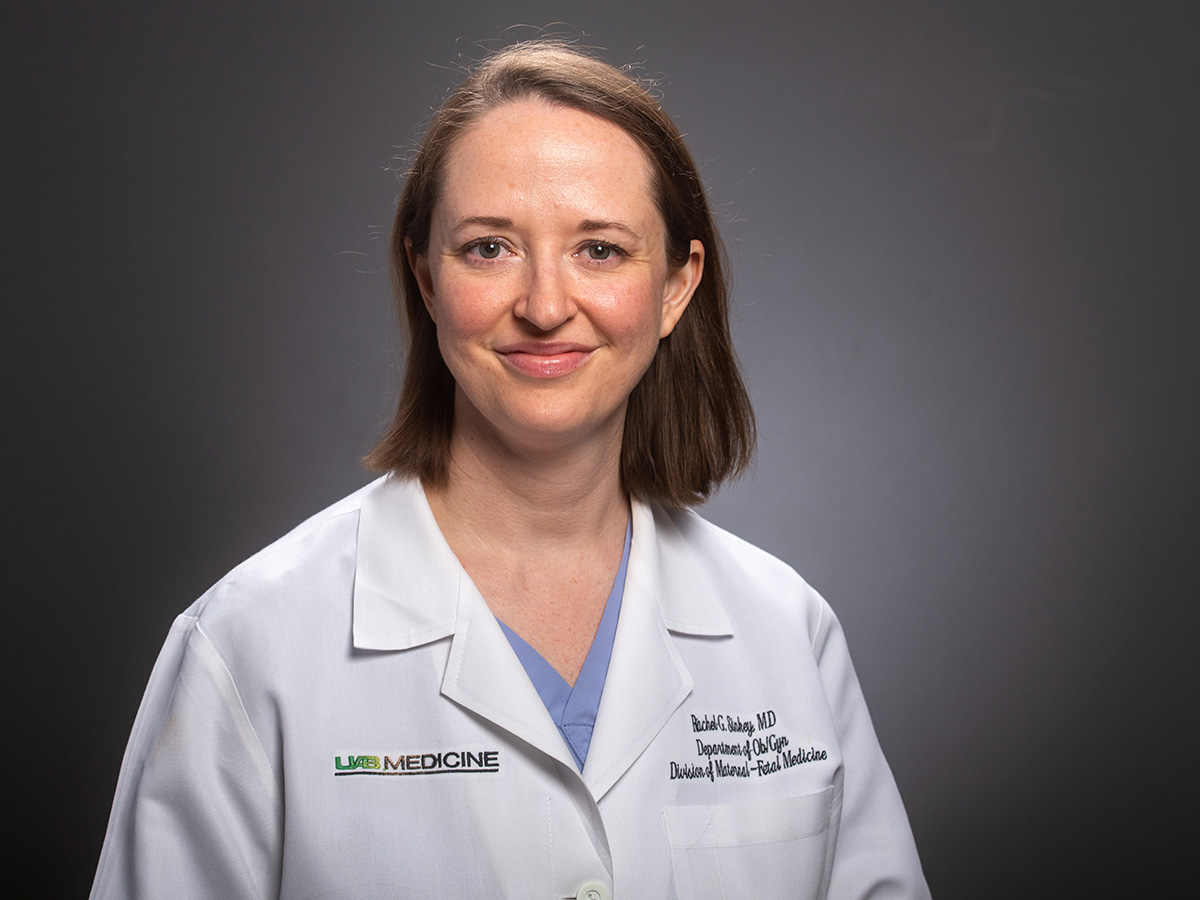 Rachel Sinkey, M.D.A large national clinical trial focused on pregnant patients with non-severe hypertensive disorders of pregnancy has launched at the University of Alabama at Birmingham. The study, “Gestational hypertension and preeclampsia blood pressure (BP) treatment goals” or GOALPOST Trial, will define national guidelines for the treatment of non-severe HDP in pregnancy in the United States and worldwide.
Rachel Sinkey, M.D.A large national clinical trial focused on pregnant patients with non-severe hypertensive disorders of pregnancy has launched at the University of Alabama at Birmingham. The study, “Gestational hypertension and preeclampsia blood pressure (BP) treatment goals” or GOALPOST Trial, will define national guidelines for the treatment of non-severe HDP in pregnancy in the United States and worldwide.
“We are working off previous clinical trials that informed guidance on the benefits of maintaining blood pressure for mother and baby,” said Rachel Sinkey, M.D., associate professor in the University of Alabama at Birmingham Department of Obstetrics and Gynecology. “If the GOALPOST Trial is successful, national guidelines for the treatment of non-severe HDP in pregnancy could change, revolutionizing the way patients are treated.”
Understanding hypertensive disorders of pregnancy
HDP affects up to one in eight pregnancies in the United States, leading to serious health complications for both mother and baby.
High blood pressure in pregnancy falls into two main categories: chronic hypertension, which is present before pregnancy, and pregnancy-associated hypertension, which develops during pregnancy. The latter can appear as gestational hypertension — high blood pressure after 20 weeks with no organ damage — or preeclampsia, which includes signs of organ stress or damage.
Historically, high blood pressure during pregnancy was often left untreated due to concerns that medication could harm the baby. However, the landmark Chronic Hypertension and Pregnancy, or CHAP, trial found that maintaining blood pressure below 140/90 benefits both mother and baby. These results informed new national guidelines for treating chronic hypertension earlier in pregnancy, though questions remain about when to treat pregnancy-associated hypertension.
“When a patient with a hypertensive disorder of pregnancy develops very high blood pressure, it can serve as a signal that the pregnancy may no longer be safe and that we should deliver the baby,” Sinkey said. “Currently, national HDP guidelines recommend treating BP only if the top number reaches 160 or the bottom number reaches 110. Our hypothesis is that treating the blood pressure early, when it is still in the mild range, may be better for mom and baby. But we want to make sure that treating them does not mask worsening disease and potentially harm the mom or the baby.”
Through the GOALPOST Trial, Sinkey and a team of researchers and collaborators will randomize patients across 14 Maternal-Fetal Medicine Units and additional affiliated sites to answer this question.
“The GOALPOST Trial continues nearly 40 years of research leadership by UAB investigators within the MFMU Network,” said Alan Tita, M.D., Ph.D., professor in the Department of Obstetrics and Gynecology, senior associate dean for Global and Women’s Health, and UAB MFMU site principal investigator. “Any UAB investigator is welcome to propose studies addressing problems related pregnancy and childbirth to be conducted within the MFMU Network.”
Redefining treatment approaches through the GOALPOST Trial
The GOALPOST Trial will randomize over 4,000 women by treating them in two ways. One group will receive standard care, which involves treatment with blood pressure medication if blood pressure becomes severely elevated, defined as reaching or exceeding 160/110. The other group will be treated with blood pressure medicine to lower blood pressure to less than 140/90.
Hypertensive disorders of pregnancy affect up to one in eight pregnancies in the United States and can cause serious complications for both mother and baby.
“These are not patients who had high blood pressure before pregnancy,” Sinkey said. “When it gets high enough, we often think that the best thing is to deliver the baby.”
The trial will determine whether providing treatment earlier can help pregnancies last longer and improve outcomes for both mother and baby.
“By giving blood pressure medicine, we aim to stabilize the mom’s blood pressure, keeping her safe, and hopefully can buy more time for the baby to grow. This might decrease the chance that the baby needs the NICU or shorten how long they must stay.”
Building on proven success
The GOALPOST Trial builds on the findings of CHAP and Sinkey’s preliminary clinical trial, called the ACHIEVE Trial, which is testing the feasibility of treating pregnant women with gestational hypertension or preeclampsia as part of her K23 NIH Career Development Award.
“When we brought this experience to the Maternal-Fetal Medicine Units Network, we leaned heavily on the prior work done by our teams at UAB,” Sinkey said. “Their incredible commitment to enrolling patients and refining the protocols was invaluable. The lessons we learned from that study about what works and what doesn’t have been critical in successfully launching the multi-center trial.”
The study is being conducted within the NIH/NICHD Maternal-Fetal Medicine Units Network.
Sinkey and Tita will work alongside Rebecca G. Clifton from The George Washington University Data Coordinating Center, Dwight Rouse from Brown University and Lauri Griffin from The University of Utah, along with investigators from the MFMU.
About the NICHD MFMU Network: NICHD established the MFMU Network in 1986 to address the gap in well-designed clinical trials in maternal-fetal medicine and obstetrics. UAB is currently funded for a seven-year cycle from 2023-2030.